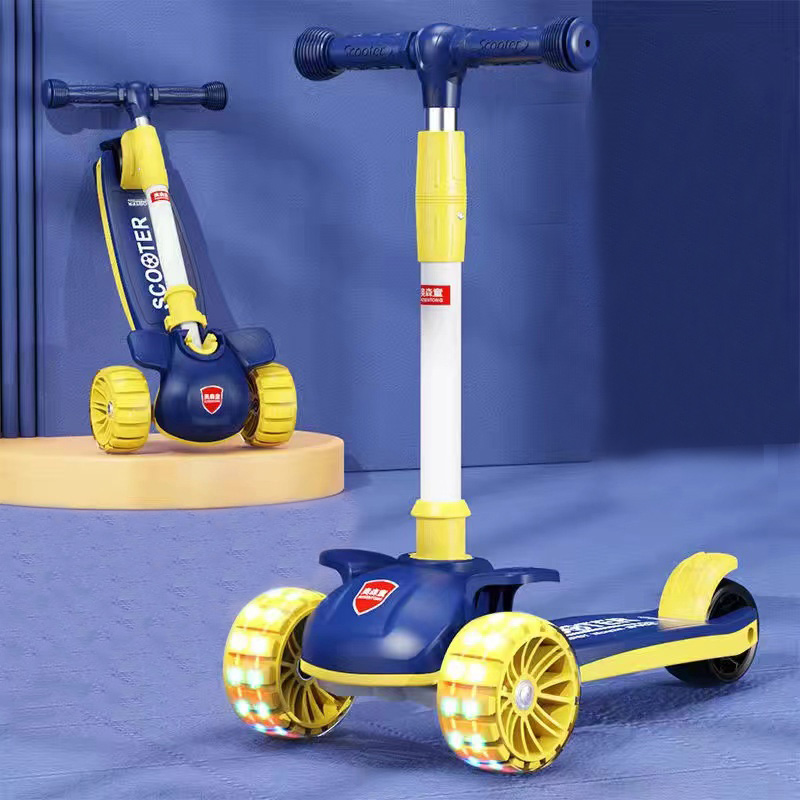How to Teach Your Kid to Ride a Motor Scooter
Teaching your child to ride a motor scooter can be an exciting experience filled with joy and learning. It not only helps them develop a sense of independence and confidence but also instills important skills such as balance, coordination, and road safety awareness. Here are some essential steps to make the learning process enjoyable and safe.
1. Choose the Right Scooter
Before you begin teaching, it’s crucial to select the right scooter for your child. Make sure that it’s age-appropriate and has features suitable for beginners. Look for a scooter that is lightweight and has a comfortable seat height. Safety features, such as a reliable braking system and good tire tread, are essential. Additionally, consider electric scooters designed for children, which often have lower speed limits, making them safer for new riders.
2. Equip for Safety
Safety should be your top priority when teaching your child to ride. Equip them with essential safety gear, including a well-fitting helmet, knee pads, elbow pads, and sturdy shoes. Explain the importance of wearing this gear every time they ride to protect themselves from potential falls and injuries. Make sure that the helmet meets safety standards and fits snugly on their head.
Begin the teaching process in a safe, open, and flat space away from traffic, such as an empty parking lot or a park. Have your child practice balancing on the stationary scooter, getting them comfortable with the weight and feel of it. Encourage them to practice pushing off with their feet while keeping both hands on the handlebars. Once they can balance, show them how to use the throttle and brakes.
4. Practice Starting and Stopping
lehuo how to teach kid ride motor scooter

Once your child feels comfortable with balancing, teach them how to start and stop. Demonstrate how to twist the throttle gently to move forward, and what to do when they want to stop. Encourage them to practice these movements multiple times until they feel confident. It’s also important to teach them about gradual acceleration and deceleration, so they understand how to control their speed.
5. Take Short Rides
After mastering starting and stopping, take small rides together. Start with short, straight paths and gradually introduce gentle turns. Encourage your child to look ahead rather than down, as this will help them maintain balance and navigate more effectively. While riding, remind them to keep a safe distance from obstacles and other riders. Praise their progress to build their confidence.
6. Teach Road Safety
Once your child has a good grasp of riding, it’s time to introduce road safety. Discuss the importance of following traffic rules, such as stopping at stop signs, yielding to pedestrians, and using hand signals when turning. If possible, take them for rides on quiet streets to practice these skills in real-world settings. Emphasize that safety comes first and that they should always be aware of their surroundings.
7. Encourage Independence
As your child becomes more proficient, encourage them to ride independently while remaining nearby for support. Let them explore different routes and understand the scooter’s handling in various situations, like inclines or different surfaces. Use this time to reinforce safe riding habits and good judgment.
Conclusion
Teaching your child to ride a motor scooter can be a rewarding experience that strengthens your bond while fostering important life skills. By following these steps and prioritizing safety, you can ensure that your child enjoys riding with confidence and responsibility. Remember, every child learns at their own pace, so be patient and supportive throughout the entire process!
-

 Scoot&RideKids Child Kick Push Scooter 3 Wheels with LED Flashing Tilt Lean Boys Girls Scooter
Scoot&RideKids Child Kick Push Scooter 3 Wheels with LED Flashing Tilt Lean Boys Girls Scooter




- 4
$33.17 -

 Scoot&RideKids Scooter Child Kick Flashing LED Light Up 3 Wheel Push Adjustable Folding 3
Scoot&RideKids Scooter Child Kick Flashing LED Light Up 3 Wheel Push Adjustable Folding 3- 0
$25.52 -

 Scoot&RideKids Scooter Child Kick Flashing LED Light Up 3 Wheel Push Adjustable Folding 2
Scoot&RideKids Scooter Child Kick Flashing LED Light Up 3 Wheel Push Adjustable Folding 2- 0
$33.17 -

 Scoot&RideKids Scooter Teens Foldable Kick Push Scooter Adjustable Height Safe 2 Wheels
Scoot&RideKids Scooter Teens Foldable Kick Push Scooter Adjustable Height Safe 2 Wheels




- 4
$49.99
Meet our partners and discover what powers their creativity!
When you register for a Lohas scooter, you will receive a 10% discount on your first order and can be notified of sales, new product launches and other offers in advance.









